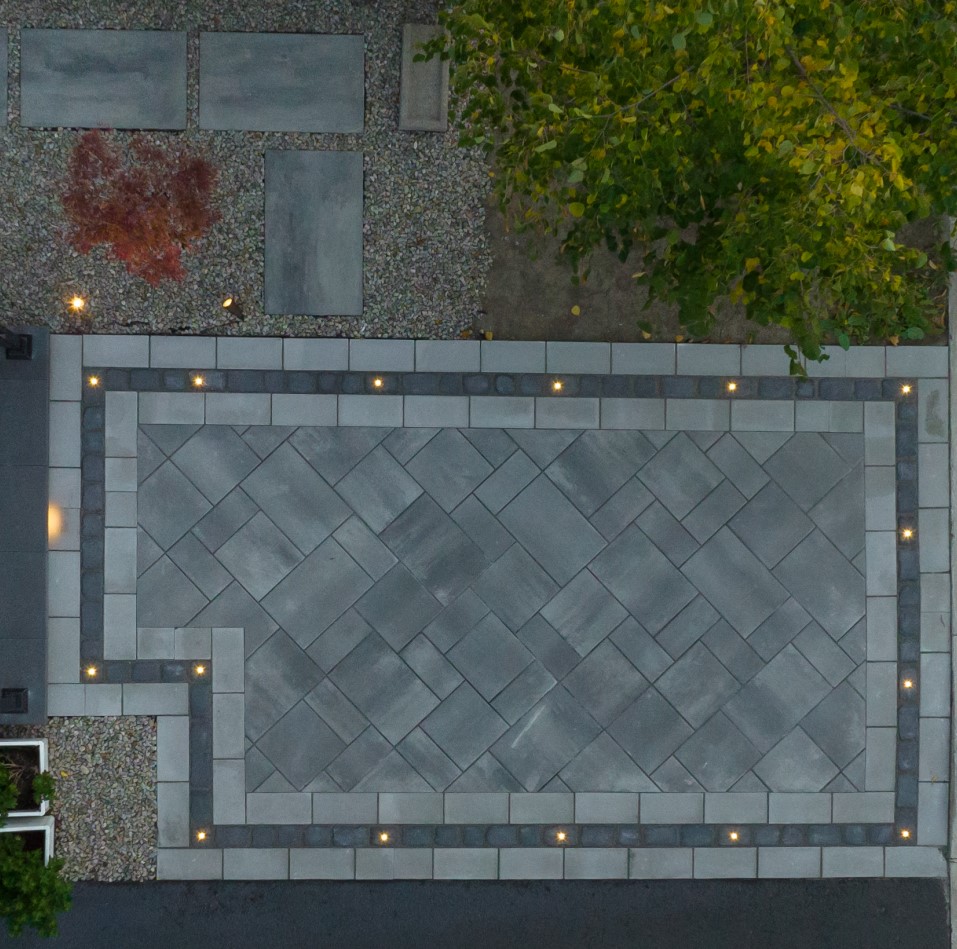Interlock is a type of stone pattern used to create a smooth surface and can be a beautiful addition to any backyard! Though a similar look can be achieved with stamped concrete, interlock offers some additional benefits, such as relatively easy installation and long life! But how long does backyard interlock last?
Backyard interlock can last for decades if properly maintained and cared for on a routine basis. Alongside the careful installation, maintenance of your backyard interlock, such as keeping it properly cleaned and free of debris, is crucial for its longevity.
So, what does maintenance for backyard interlock entail after you’ve received backyard interlocking? How often should you clean your interlock, and with what? What causes problems with backyard interlock, and how can you avoid them? At AHS, we’re happy to provide you with the answers – keep reading to find out more!
How long does backyard interlock last?
Backyard interlock can last for decades, making it an excellent option for surfaces such as driveways, walkways, and backyard patios. Some customers report their interlock has lasted up to 45 years!
How do I maintain my backyard interlock?
Maintaining a backyard can be hard work, but it sure is rewarding! Backyard interlock is one of the most essential parts of the backyard because it protects the surface from erosion and provides a level surface for activities like playing, cooking and gardening.
So how do you keep your interlock well-maintained? Well, doing some simple maintenance on your interlock can keep it healthy and
Washing the surface
Accumulation of debris can cause disruptions in your backyard interlock over time, leading to lifted stones, cracks, or stains. Luckily, interlock can easily be washed with a power washer, removing any debris from the stones. Be sure to clear up any cracks with the power washer as well, as this will be important for our next step!
Sanding
Once you’ve taken a power washer to your interlock, you’ll need to move on to the next step: sanding. Pouring polymeric sand onto the stones will help fill in cracks and keep the joints between the stones strong and sealed.
Use a broom to sweep the polymeric sand into the cracks of the interlock, ensuring they’re filled to create a seal between stones, decreasing the likelihood that stones will crack or lift.
Misting
After the polymeric sand has been applied to the interlock, you should go over the stones and mist them. The water helps the polymeric sand to settle in the cracks and keep the stones securely in place.
Misting the polymeric sand activates its bonding properties, forming a flexible, durable seal between stones. This is an essential step in the maintenance process, as polymeric sand helps prevent erosion to your interlock stones that the weather can cause. The seal provided by polymeric sand also helps inhibit plant growth.
Removing damaged stones
Another reason why interlock is so useful is that it’s easy to replace damaged stones! Unlike concrete, single stones can be removed from an interlocking pattern and replaced when damaged or lifted from the base. Then, simply take these stones out and put new ones in their place to keep your interlock smooth and secure!
How often should I maintain my backyard interlock?
Backyard interlock should undergo routine maintenance approximately once every few years, making it relatively effortless to maintain! Routine maintenance for backyard interlock includes washing and sanding as described above.
If your backyard interlock requires more involved maintenance, give us a shout! AHS has over 20 years of experience and is well-equipped to take your backyard to the next level with our award-winning service.

